Becoming a successful online business owner takes more than just selling products and services you think people will want.
Sure, you’ll generate some traffic, especially if you publish keyword optimized content, run PPC advertisements, and interact with people on social media.
But if you really want to pull ahead of the competition and begin to scale your business, you need to get to know your target audience on a deeper level.
Today we’re going to show you how to create buyer personas of your customers, so you can target them in ways that will nearly guarantee conversions and sales.
So, let’s get started.
What is a Buyer Persona?
A buyer persona, often referred to as a marketing persona, is a fictionalized version of your ideal customer.
Everything from demographics to interests and career history to family size should be included in a well-rounded buy persona.
By bringing to life representations of your ideal customers, you can better understand what attracts them to your brand, what encourages them to convert, and what it takes to get them to stay loyal.
In addition, buyer personas can help drive:
- Products and services you offer, create, and discontinue
- Content marketing efforts
- Sales follow up procedures
- Advertisement techniques (e.g., PPC, banner ads, affiliate links, etc.)
- Social media interactions
- And so much more
As the online space becomes more crowded, and competition for both new and long-term customers becomes tougher, it becomes essential for even small businesses to focus on buyer personas.
And with the resources and tools available today, creating multiple buyer personas for your online business is not hard to do.
You can create one buyer persona to represent your entire target audience or create multiple buyer personas to represent different segments of your target audience.
And even if you don’t run an actual eCommerce shop, instead opting to start a dropshipping business, creating a buyer persona is still important.
After all, even though you don’t handle inventory and shipping with a dropshipping business, and instead use suppliers to run that part of the business for you, you’ll still have an ideal customer to target.
Let’s take a look.
Step 1: Identify Target Customer Groups
The first thing you need to do when creating a buyer persona for your business is to gather information about the actual people that are buying from you right now.
After all, those are the kind of people you’ll want to target in the future since they are buying from you already.
The easiest way to gather information about your current customers is to use Google Analytics.
Linked to your business website, Google Analytics collects a multitude of information about who is visiting your site and what they do once on your website.
To start, navigate to Audience > Demographics > Overview to see the age ranges of your site visitors and genders.
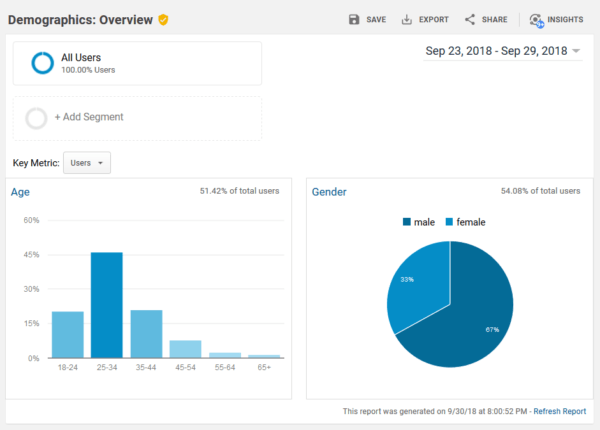
Depending on the information here, you may already be able to start creating your buyer personas.
Next, under Demographics, you can navigate to Interests to see what your site visitors are interested in:
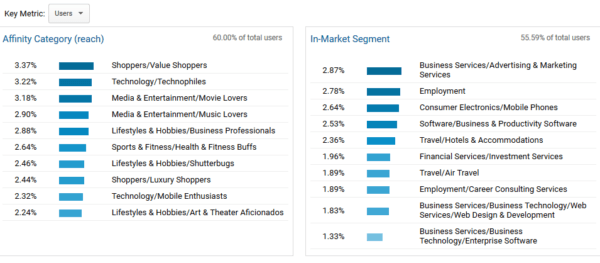
Here you’ll see two main groups:
Affinity Category: this represents the long-term interests of your site visitors. This will give you an overall sense of a person’s general interests, passions, and lifestyle.
In-Market Segment: this represents the short-term interests of people that are actively searching for and comparing the products and services you have to offer.
Of course, these are just two examples of the type of information Google Analytics has available.
The truth is, there is an overwhelming amount of data to be accessed, and it can become overwhelming quickly.
It’s probably best to list out the specific demographic information you want to learn about your buyers – such as age, gender, interests, language, location, etc. – and then study the data.
Once you’ve studied the data, group your buyer personas and move to the next step.
Step 2: Capture Personal Information on Your Website
To aid your data analysis, make sure to make the most out of your online forms to capture any data from actual site visitors and customers that are either engaging with your site’s content or buying from you.
You can use a contact builder plugin such as WPForms if you run a WordPress website. This plugin comes with tons of built-in form fields designed to capture the data you need from people.
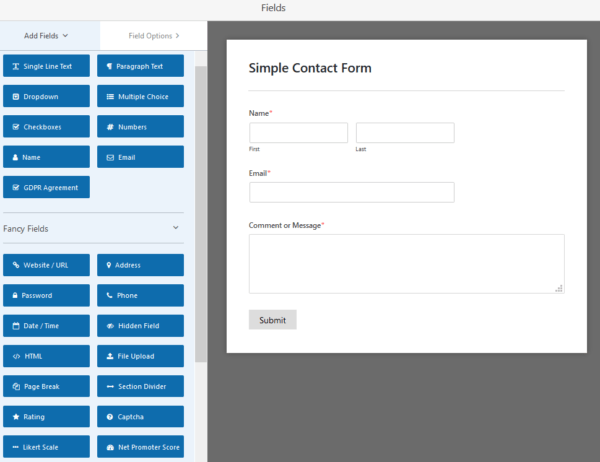
You can even take it one step further and run surveys on your website using WPForms to find out things like:
- Whether they’d recommend your brand to others
- How their experience with your sales or support team was
- How often they use your products and services
- What their pain points are
- Products and services they wished you’d launch
- How satisfied they are with previous purchases
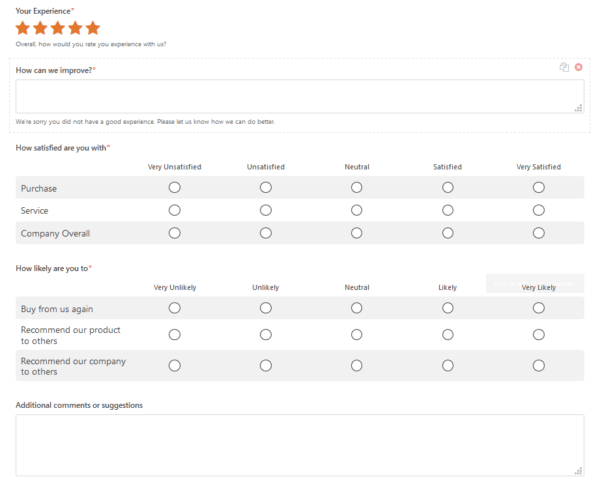
Of course, the templates found in WPForms are only a guide. If you want, you can add or delete any of the available form fields to suit your individual needs.
And if you’re looking for a simple, free survey form to add to your website to gather more buyer persona information, be sure to check out SurveyMonkey.
Step 3: Spy on Your Competition
Another helpful source of information for creating your buyer personas is your competition. After all, they are your competition for a reason.
They must be doing something right.
You can use several tools to check out what your competition is doing concerning social media, content marketing, advertisements, and more:
- Mention. Monitor things like how your competition engages with your target audience, how they’re building quality links, what customers are complaining about or praising, and the geographic location of all mentions of their brand.
- FadFeed. If you rely heavily on Facebook for advertising and attracting new customers, use FadFeed to get rid of all family and friend feed items on your Facebook account. From there, check out all the ads on Facebook that may be vying for your target audience. Use these techniques on your own ads, see what people are talking about on your competition’s feed, and build a stronger buyer persona from that information.
- Moz’s Link Explorer. Find out how your domain authority (DA) measures up to your biggest competition. Plus, find out where there most authoritative editorial links are coming from so you can frequent those websites and see what kind of people are visit them. This can round out the sort of people you think might be interested in what you have to offer.
Lastly, use SEMRush to learn about your competition’s:
- Organic and paid search reach
- Number of backlinks, including links to the top websites
- Top organic keywords, including search position, volume, and CPC
- Main competitors (which will be more competition for you to study)
- Top paid keywords
- Referring domains
- Link to landing pages, latest publishers, and indexed pages
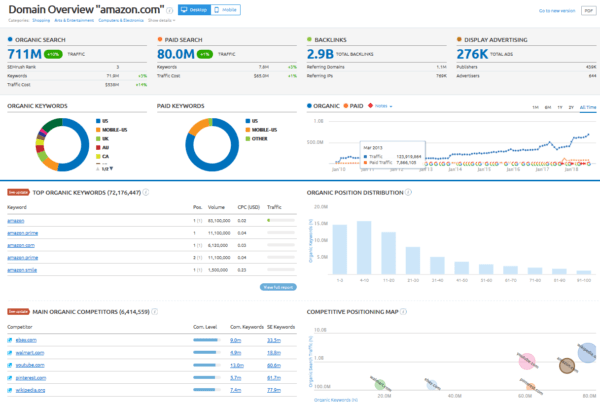
Using this information, you can see what kind of people your competition is attracting, and add those qualities to the buy personas you’re creating.
Step 4: Create a Buyer Persona Avatar
After you’ve collected everything there is to know about your buyer personas, it’s time to create a buyer persona avatar and organize the data you’ve collected.
You can use a fun (and free!) tool such as Avatar Maker to do this. Here’s an example one we’ve created off fictitious buyer persona information:
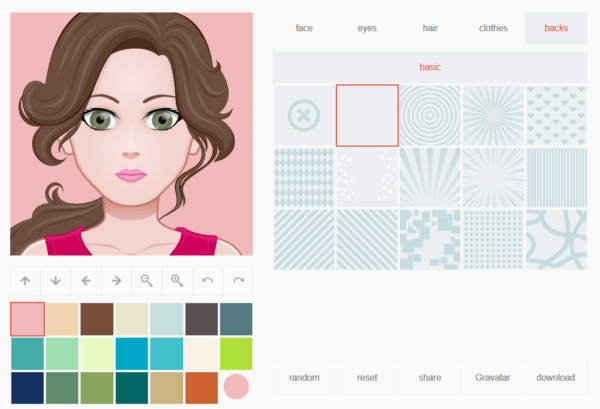
After creating an avatar to match your buyer persona, we will add all the other data collected that makes her an ideal customer for our business.
You can do this using a neat tool called Xtensio, which has a buyer persona template:
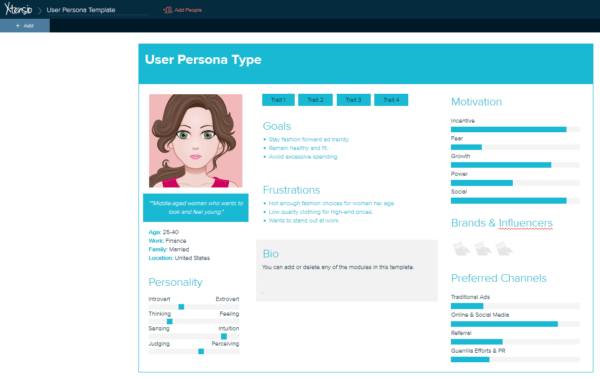
You can edit your buyer persona template to have whatever relevant information you need to target the right kinds of people with the right type of content, products, and services.
Step 5: Bring it all together in an effective marketing campaign
All too often, campaigns are launched without a solid context.
Before starting an ad campaign, it is important to know who your customers are upfront, so your marketing strategies won’t feel like a gamble every single time.
Buyer personas allow you to deliver a specifically tailored message that resonates well with your audience.
It focuses on what your buyer wants and needs, thus helping you craft a better marketing campaign for every stage of your buyer’s journey.
Because you have a clear understanding of the problems and pain points of your customers, it is easier to come up with a sales promotion strategy that speaks more clearly with your target.
This is the key to creating laser focused paid ads and creating more compelling content.
Final Thoughts
In the end, there’s a lot that goes into launching and running a successful online business that continues to grow naturally.
And the truth is, without a deeper understanding of your customers, growing is nearly impossible.
That’s why it’s important you take the time to study those that buy from you so that you can continue to satisfy them long into the future.
It’s equally important you continue to target the right kinds of people, so you can convert them into returning customers.
Although creating buyer personas take a lot of time, trust us, it’ll be worth it in the end when you realize you have a successful eCommerce store that continues to scale year after year.
- Why Data Security Is the Real AI Risk - June 30, 2025
- Why Being Bold Matters in Cybersecurity—and Branding - June 3, 2025
- Gear Tested and Approved: My Top Picks for Dads and Grads This Season - May 28, 2025



